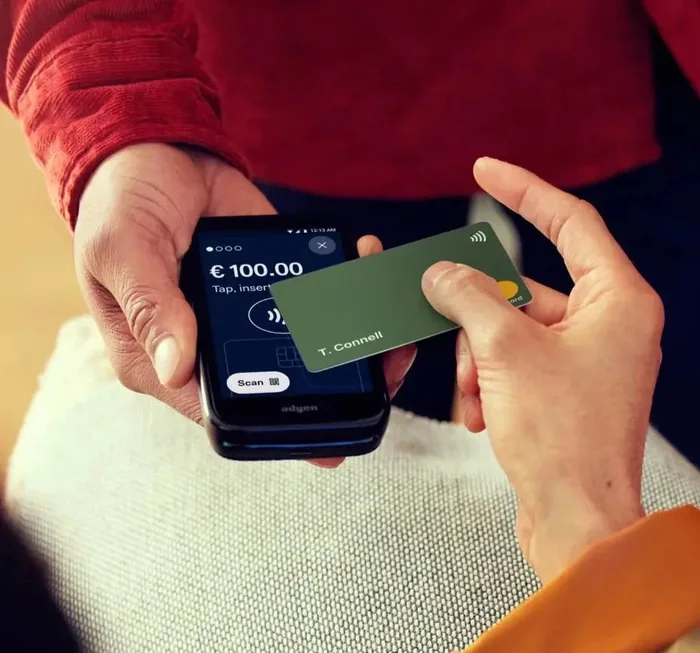If you run a small business in the UK, accepting card payments is no longer optional – it’s expected. Whether you’re operating a coffee shop, a salon, or a pop-up market stall, your customers want fast, secure, and convenient ways to pay.
In this guide, we’ll break down everything you need to know about accepting card payments, from choosing the right card machine to understanding transaction fees — with practical tips for keeping costs low and the setup process simple.
Why Accepting Card Payments Matters
More than 80% of UK retail transactions now happen via card or digital payment. If you’re still relying on cash only, you’re likely missing out on sales — and frustrating customers in the process.
Card payments help your business:
- Improve customer experience
- Increase average transaction size
- Compete with larger or chain retailers
- Reduce the risk and hassle of handling cash
Step-by-Step: How to Accept Card Payments
1) Choose a Card Machine (or Reader)
The right card machine depends on how and where you do business:
- Countertop Machines – Ideal for traditional till setups
- Portable Machines – Great for hospitality and table service
- Mobile Card Readers – Perfect for pop-up shops or delivery drivers
- Integrated POS + Payment Systems – Best for businesses wanting everything in one place
2) Pick a Payment Provider
Your payment provider securely processes transactions between your customer’s card and your bank account. When choosing one, look for:
- Clear, transparent pricing
- No long-term contracts or setup fees
- Quick settlement of funds
- Easy-to-use hardware and support
Tapapay offers straightforward fees based on card type, so you always know exactly what you’re paying. There are no complicated contracts, and setup is quick — ideal for small businesses looking for simplicity and value.
3) Understand Fees and Costs
Not all card payment providers are upfront about what you’ll actually pay. Some use confusing pricing models or vague terms without clearly stating how rates vary by card type or payment method. This can make it hard to work out your true costs — especially once your monthly volume grows.
Here’s what to look out for:
- Transaction fees – Often a fixed fee (e.g. 5p–10p) plus a percentage that varies by debit, credit, or international card.
- Hardware costs – One-time purchase or monthly rental for your card machine or reader.
- Additional fees – May include:
- Gateway fees (for online or integrated payments)
- PCI compliance charges
- Refund or chargeback fees
- Minimum transaction fees (if monthly sales are low)
- Service or support fees
With Tapapay, pricing is completely transparent. You’ll see exactly what you’re paying per transaction, based on the type of card used — no hidden gateway charges, no minimum transaction fees, and no nasty surprises.
4) Set Up Your Account
Before you can start taking payments, complete a quick online onboarding process. To comply with KYC (Know Your Customer) regulations, you’ll typically need:
- Your company or sole trader details
- A form of ID (e.g. driving licence or passport)
- Proof of business (recent bank statement or utility bill)
Once submitted, your account is usually verified within hours. With Tapapay, the process is simple, fast, and fully digital — so you can get up and running quickly.
5) Set Up Your Card Machine
Most card machines are plug-and-play. Typically you’ll:
- Plug in or charge the device
- Connect to Wi-Fi (or 4G if standalone)
- Start taking payments
Providers like Tapapay offer quick onboarding and remote support if needed.
6) Train Your Staff (If You Have a Team)
Make sure your staff can confidently:
- Take contactless, chip & PIN, and mobile payments
- Process refunds if required
- Troubleshoot common issues
This keeps queues short and ensures a smooth experience for customers.
7) Start Taking Payments
You’re ready to go. From day one you should:
- See a clear breakdown of fees per transaction
- Access easy-to-read statements
- Receive funds quickly into your bank account
Bonus: Accept Payments Online with iWantFed and GiveaVoucher
If you're looking to expand beyond in-person payments, Tapapay also supports online payments through integrated platforms designed for UK hospitality and retail.
iWantFed – Online Ordering
Perfect for restaurants, takeaways, and cafés, iWantFed lets customers place orders online and pay securely in advance. It’s fully integrated with your POS and Tapapay, so orders flow straight into your system — no extra terminals or manual entry needed.
GiveaVoucher – Sell Gift Vouchers Online
Boost revenue with digital gift vouchers. GiveaVoucher enables customers to buy and send vouchers online, with payments processed seamlessly through Tapapay. Great for cash flow and attracting new customers.
Both platforms offer branded checkout experiences, work across mobile and desktop, and make it easy for your customers to pay how they want — from anywhere.
What’s the Best Card Payment Setup for Small Businesses?
There’s no single answer, but the best setup will be:
- Affordable and scalable
- Easy to manage day-to-day
- Clear on pricing (no hidden charges)
- Flexible enough to fit your business model
- Backed by helpful, responsive support
Tapapay was designed with independent UK businesses in mind. Whether you run a café, a shop, or a mobile service business, it’s a simple and reliable way to accept payments with no fuss.
Final Thoughts
Getting started with card payments is easier than it used to be — and it opens up more opportunities for your business. With the right machine, provider, and support, you can give customers the convenience they expect while keeping costs and admin low.
Ready to start taking cards?
Get transparent fees, modern hardware, and fast onboarding.
